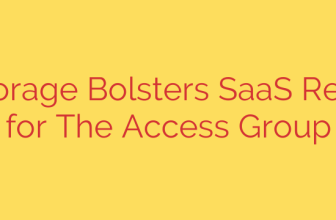
Achieving 99.9% SLA Uptime: The MSP’s Guide to Proactive Monitoring
For any Managed Service Provider (MSP), the Service Level Agreement (SLA) is more than a contract—it’s a promise. Delivering on that promise, especially a demanding uptime guarantee like 99.9%, requires moving beyond traditional, reactive IT support. In high-stakes industries like financial services, where even a minute of downtime can have significant consequences, the need for unwavering reliability is absolute.
The old model of waiting for an alert that something has broken is no longer viable. The future of elite IT service delivery lies in proactive monitoring and complete visibility across the entire technology stack.
The Problem with a Siloed, Reactive Approach
Many MSPs struggle to meet stringent SLAs because their monitoring tools operate in silos. One system watches network devices, another monitors cloud services like Azure or AWS, and yet another tracks application performance for platforms like Microsoft 365. This fragmented view creates critical blind spots.
When a performance issue arises, technical teams are forced to scramble, piecing together data from disparate sources to find the root cause. This reactive “firefighting” is inefficient, stressful, and, most importantly, it means the client is already experiencing a problem. By the time you get an alert, the SLA may already be at risk.
The Shift to Proactive Service Assurance
Top-tier MSPs are adopting a new strategy centered on proactive service assurance. This approach focuses on identifying and resolving potential issues before they impact the end-user. The cornerstone of this strategy is a unified monitoring platform that provides a “single pane of glass” view into a client’s entire IT ecosystem.
Instead of just flagging when a server is down, this holistic approach monitors the health and performance of every component contributing to a service. This includes:
- Network Infrastructure: Routers, switches, and firewalls.
- Cloud Environments: Performance and availability of services in Azure, AWS, and other cloud platforms.
- Critical Applications: Uptime and responsiveness of essential software like Microsoft 365.
- Connectivity: The quality and stability of internet and WAN links.
Key Benefits of a Unified Monitoring Platform
Integrating all monitoring data into a single, cohesive platform provides a powerful advantage for MSPs dedicated to upholding their SLAs.
True End-to-End Visibility
A unified platform eliminates the guesswork. It allows support teams to see the entire service delivery chain, from the user’s application all the way to the underlying network and cloud infrastructure. This comprehensive visibility makes it possible to instantly pinpoint the source of a slowdown, whether it’s a network issue, a cloud service degradation, or an application-level problem.Early Warning and Anomaly Detection
Modern monitoring platforms don’t just wait for a failure. They analyze performance trends over time to detect subtle degradations that signal a future problem. Receiving an alert that network latency is slowly increasing or application response time is degrading gives you the chance to intervene proactively, fixing the issue long before the client ever notices.Demonstrable SLA Compliance
When you promise 99.9% uptime, you need the data to back it up. A unified platform provides clear, easy-to-understand dashboards and historical reports that prove you are meeting your contractual obligations. This transparency builds immense trust and strengthens the client-provider partnership, turning your operational excellence into a key selling point.
Actionable Security and Reliability Tips for MSPs
To successfully deliver on demanding SLAs, MSPs must build a culture of proactivity. Here are a few essential steps:
- Audit Your Toolset: Evaluate your current monitoring systems. Are they integrated, or are they creating data silos that hinder your team’s ability to diagnose problems quickly?
- Map Critical Client Services: For each client, clearly map out the technology components that support their most critical business functions. This will help you prioritize your monitoring efforts.
- Focus on Performance Trends, Not Just Uptime: Shift your team’s focus from simple up/down alerts to analyzing performance trends. A service that is slow is often just as disruptive as one that is offline.
- Automate Reporting: Use your monitoring platform to generate automated health and SLA compliance reports for clients. This demonstrates your value and keeps them informed without adding to your team’s workload.
Ultimately, guaranteeing exceptional uptime is about seeing the full picture. By moving from a reactive, siloed approach to a proactive, unified monitoring strategy, MSPs can not only meet their SLA commitments but also build a powerful reputation for reliability and unparalleled client service.
Source: https://feedpress.me/link/23532/17171337/highlight-platform-assures-horizon-rivers-99-9-sla-secure-uptime-service








